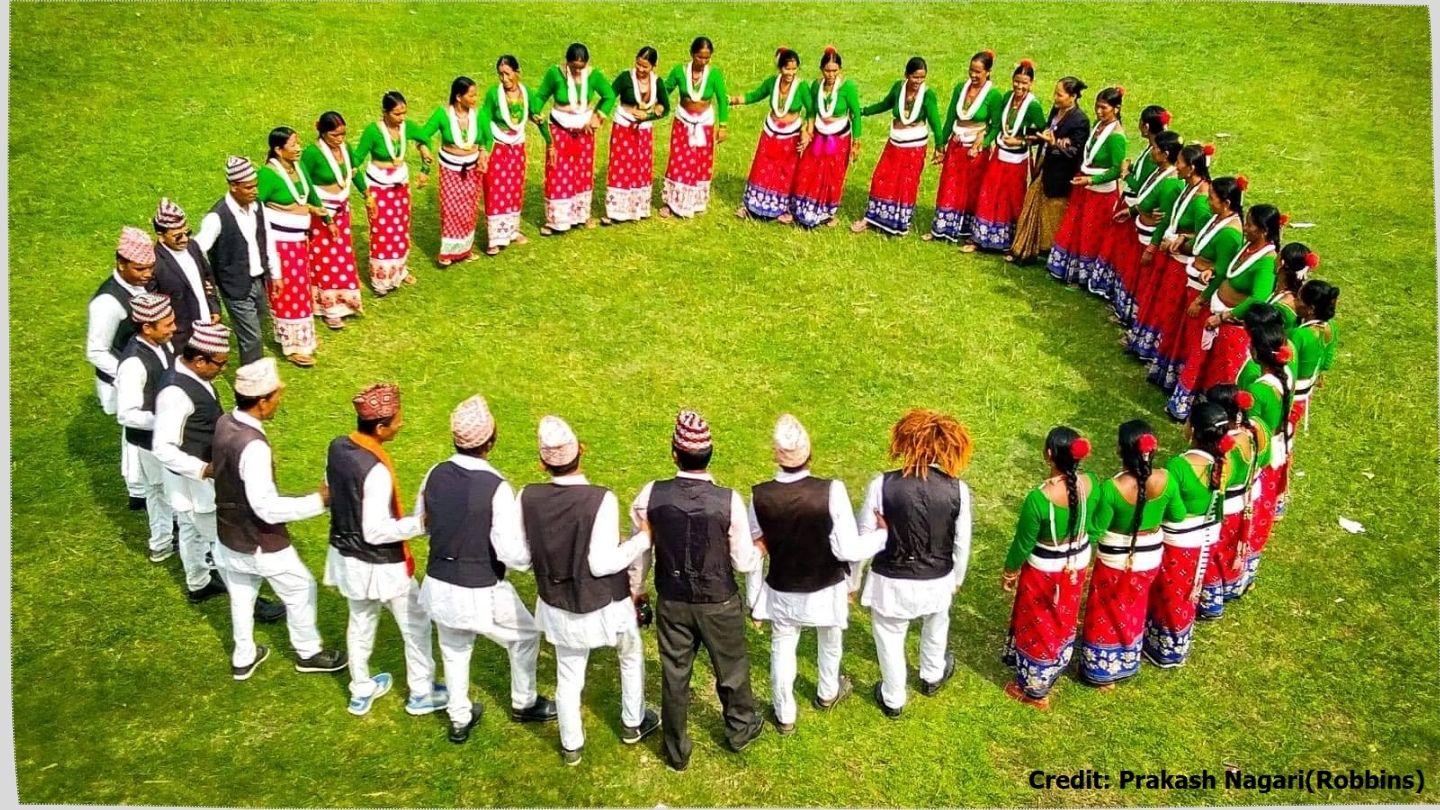
Deuda Song: Folk Dance-Song of Western Nepal
What is Deuda?
Deuda is a dance-led folk song performed across western Nepal, especially at fairs, festivals, and village gatherings. The performance itself is often called Deuda khel or Nyauli khel. While rooted locally, its appeal has spread beyond the region.
How it’s performed
Deuda is usually a group presentation, though solo singing is possible. Performers form a circle and move with a distinctive “step-and-a-half” cadence. This circular, call-and-response style gives the genre its recognizable rhythm and energy.
When and where it’s sung
Deuda features prominently during Dashain, Tihar, Holi, the Gaura festival, village fairs, putala and ratyoli events, and weddings. It is prevalent in Sudurpashchim and Karnali Provinces—especially in Baitadi, Achham, Bajhang, Bajura, Darchula, Doti, Dadeldhura, Kalikot, Jumla, Dailekh, Jajarkot, and Humla—and has also made an impact in districts like Kailali, Bardiya, Banke, and Surkhet.
Language and names
Most Deuda lyrics draw from the Khas linguistic tradition of western Nepal. The style is also known as Deuda bhaka, Deuda geet, or Lok Deuda. Some trace the word Deuda to a Sanskrit term deunduraya—evolving through deudura to today’s usage.
Themes and social meaning
Artists describe Deuda as a vehicle for life’s joys and sorrows—union and separation, teasing and debate. Historically, boys and girls would engage in playful question-and-answer through Deuda verses, and the exchange sometimes led to real-life bonds. The songs are flexible: singers can adapt the words to almost any tune while preserving the local cadence.
Cultural notes and evolution
Many communities once hesitated to sing Deuda in public, but its profile has grown nationally. Media sometimes label a wide range of western hill songs as “Deuda,” and some even refer to regional speech varieties (Khas, Achhami, Doteli, Baitadi, etc.) as a “Deuda language,” reflecting the music’s deep cultural imprint.
Historical backdrop of the language
The Khas language flourished from western Nepal’s Sinja (Jumla) and spread widely during the Khas polity—later becoming the basis for modern Nepali. Everyday forms like aya, gaya, khaya, bhaya are still common in the west. Alongside the language, Nyauli/Nyaulya singing traditions took root; in India’s Kumaon, related tunes such as Thadi bhaka are popularly called Nyauli.
Key takeaways
-
Dance-centric folk singing with a circular formation and responsive lyrics.
-
Performed mainly in western Nepal during major festivals and social events.
-
Lyrics rooted in the Khas linguistic tradition; known by multiple local names.
-
Serves as living community dialogue—playful, expressive, and adaptable.


